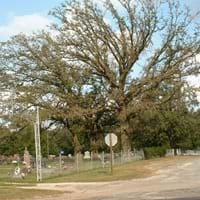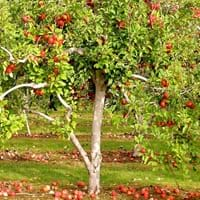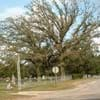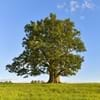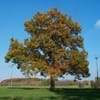Life Span
Perennial
Perennial
Type
Tree
Flowering Plants, Fruits, Trees
Origin
North America, United States, Northeastern United States, Mid-Atlantic United States, Southeastern United States, North-Central United States, Central United States, South-Central United States, Texas, Canada
Central Asia
Types
Not Available
Aceymac apple, Bailey Sweet apple, Dabinett apple, Nehou apple
Number of Varieties
Not Available
Habitat
Woodland Garden Canopy
Hillside
USDA Hardiness Zone
3-8
5-8
Sunset Zone
A2, A3, 1a, 1b, 2a, 2b, 3a, 3b, 4, 5, 6, 7, 8, 9, 10, 11, 14, 15, 16, 17, 18, 19, 20, 21, 22, 23
A1, A2, A3, 8, 9, 10, 11, 12, 13, 14, 15, 16, 17, 18, 19, 20, 21, 22, 23, 24
Habit
Oval or Rounded
Oval or Rounded
Flower Color
Red, Light Green, Chartreuse
White
Flower Color Modifier
Bicolor
Not Available
Fruit Color
Brown, Chocolate
Green, Red
Leaf Color in Spring
Green, Light Green, Dark Green
Dark Green
Leaf Color in Summer
Dark Green
Green
Leaf Color in Fall
Dark Green, Gold, Brown
Brown, Green, Light Yellow
Leaf Color in Winter
Not Available
Not Available
Plant Season
Spring, Summer, Fall, Winter
Spring
Sunlight
Full Sun
Full Sun, Partial shade
Type of Soil
Clay, Loam, Sand
Loamy
The pH of Soil
Neutral, Alkaline
Neutral
Soil Drainage
Well drained
Well drained
Bloom Time
Spring, Late Spring
Fall, Summer
Tolerances
Soil Compaction
Drought
Where to Plant?
Ground
Ground
How to Plant?
Seedlings, Transplanting
Grafting, Seedlings, Transplanting
Plant Maintenance
Medium
Medium
Watering Requirements
Average Water Needs, Keep the ground moist but not water-logged, Needs a lot of water initially, occasional watering once established, Water Deeply
Medium
In Summer
Lots of watering
Lots of watering
In Spring
Moderate
Moderate
In Winter
Average Water
Average Water
Soil pH
Neutral, Alkaline
Neutral
Soil Type
Clay, Loam, Sand
Loamy
Soil Drainage Capacity
Well drained
Well drained
Sun Exposure
Full Sun
Full Sun, Partial shade
Pruning
Remove branches, Remove damaged fruit, Remove damaged leaves, Remove dead branches, Remove dead leaves, Remove dead or diseased plant parts, Remove deadheads
Prune when plant is dormant, Remove dead or diseased plant parts
Fertilizers
All-Purpose Liquid Fertilizer, High amounts of nutrients, organic fertlizers
All-Purpose Liquid Fertilizer
Pests and Diseases
Red blotch
Aphids, Canker, Caterpillars, Powdery mildew, Root rot
Plant Tolerance
Drought
Drought
Flowers
Insignificant
Yes
Flower Petal Number
Not Available
Single
Foliage Texture
Coarse
Medium
Foliage Sheen
Glossy
Matte
Allergy
Hay fever, Itchy eyes, Runny nose, sneezing, Watery eyes, Whooping Cough
Mouth itching, Throat itching
Aesthetic Uses
Not Used For Aesthetic Purpose
Not Used For Aesthetic Purpose
Beauty Benefits
Not Available
Not Available
Environmental Uses
Air purification, Nesting sites for birds, Shadow Tree, Shelter for wildlife, Wildlife
Air purification
Medicinal Uses
Astringent, Cramps, Tonic
Cancer, constipation, Diabetes, Diarrhea, Dysentry, Fever, Heart problems, Tooth ache
Part of Plant Used
Inner Bark, Leaves, Seeds
Fruits
Other Uses
Tannin, Used as a dye, Used as fuel, Used as insect repellent, Used for woodware
Used As Food, Wood is used for making furniture
Used As Indoor Plant
No
No
Used As Outdoor Plant
Yes
Yes
Garden Design
Feature Plant, Shade Trees
Fruit / Fruit Tree, Shade Trees, Showy Tree
Botanical Name
QUERCUS macrocarpa
Malus domestica
Common Name
Burr Oak, Mossycup Oak
Apple Tree
In Hindi
Burr Oak
सेब का वृक्ष
In German
Burr Oak
Apfelbaum
In French
Burr Oak
Pommier
In Spanish
Burr Oak
Manzano
In Portuguese
Burr Oak
Macieira
In Polish
Burr Oak
jabłoń
Phylum
Magnoliophyta
Magnoliophyta
Class
Magnoliopsida
Magnoliopsida
Clade
Angiosperms, Eudicots, Rosids
Angiosperms, Eudicots, Rosids
Tribe
Cherokee
Not Available
Subfamily
Not Available
Not Available
Number of Species
Not Available
Not Available
Properties of Burr Oak and Apple Tree
Wondering what are the properties of Burr Oak and Apple Tree? We provide you with everything About Burr Oak and Apple Tree. Burr Oak doesn't have thorns and Apple Tree doesn't have thorns. Also Burr Oak does not have fragrant flowers. Burr Oak has allergic reactions like Hay fever, Itchy eyes, Runny nose, sneezing, Watery eyes and Whooping Cough and Apple Tree has allergic reactions like Hay fever, Itchy eyes, Runny nose, sneezing, Watery eyes and Whooping Cough. Compare all the properties and characteristics of these two plants. Find out which of these plant can be used as indoor plant. If you are interested to decorate your house and garden, find out aesthetic uses, compare them and select the plant which will beautify your surrounding. Along with beautification, try comparing medicinal and edible uses of Burr Oak and Apple Tree and you can choose the plant having best and most benefits.
Season and Care of Burr Oak and Apple Tree
Season and care of Burr Oak and Apple Tree is important to know. While considering everything about Burr Oak and Apple Tree Care, growing season is an essential factor. Burr Oak season is Spring, Summer, Fall and Winter and Apple Tree season is Spring, Summer, Fall and Winter. The type of soil for Burr Oak is Clay, Loam, Sand and for Apple Tree is Loamy while the PH of soil for Burr Oak is Neutral, Alkaline and for Apple Tree is Neutral.
Burr Oak and Apple Tree Physical Information
Burr Oak and Apple Tree physical information is very important for comparison. Burr Oak height is 2,130.00 cm and width 2,130.00 cm whereas Apple Tree height is 25.00 cm and width 20.00 cm. The color specification of Burr Oak and Apple Tree are as follows:
Burr Oak flower color: Red, Light Green and Chartreuse
Burr Oak leaf color: Green, Light Green and Dark Green
Apple Tree flower color: White
- Apple Tree leaf color: Dark Green
Care of Burr Oak and Apple Tree
Care of Burr Oak and Apple Tree include pruning, fertilizers, watering etc. Burr Oak pruning is done Remove branches, Remove damaged fruit, Remove damaged leaves, Remove dead branches, Remove dead leaves, Remove dead or diseased plant parts and Remove deadheads and Apple Tree pruning is done Prune when plant is dormant and Remove dead or diseased plant parts. In summer Burr Oak needs Lots of watering and in winter, it needs Average Water. Whereas, in summer Apple Tree needs Lots of watering and in winter, it needs Average Water.
